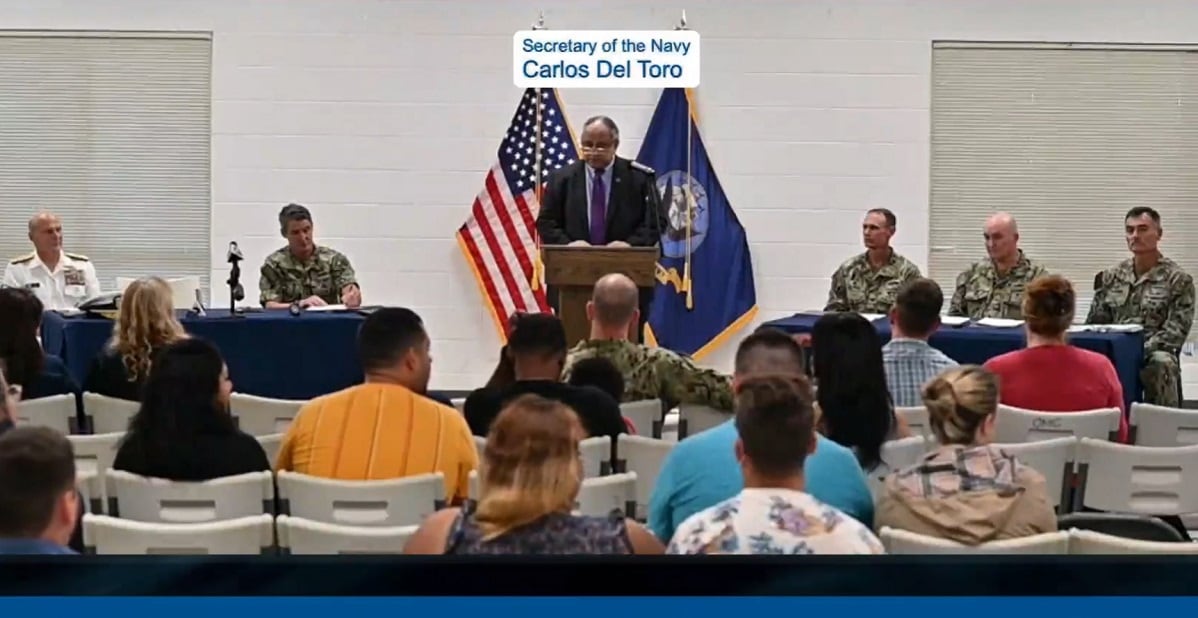Residents in Hawaii — including military families — who have been affected by the Navy water crisis still have time to participate in a survey being conducted by the Centers for Disease Control and Prevention and the Hawaii Department of Health, through Monday, Feb. 7.
The survey is designed to help health officials learn more about the experiences of people who have been affected by the petroleum contamination of their water. Initially open only to the civilian population, the survey has been opened to people affiliated with the Defense Department. All DoD-affiliated residents and assigned personnel are being automatically entered in a DoD incident report registry.
You can participate in the survey here, or contact the CDC’s Agency for Toxic Substances and Disease Registry at 404-567-3256, or via email.
The survey includes questions about the ways in which people were exposed to the contaminated water, the health symptoms they experienced, and the medical care they sought. It asks questions about the impact on children and pets, health status before the contamination, and ways to contact the participant in the future. The identity of the participants will be kept confidential.
According to the CDC, the results will help experts understand the health impacts of this contamination, and determine steps that are needed to protect public health — something military families are anxious to find out.
The data will be analyzed and the findings will be summarized in a public report.
Meanwhile, as of Feb. 4, military families still haven’t been given the all-clear that their water is safe to use. Military officials in Hawaii are awaiting results of sample tests from homes that have been flushed as officials attempt to remove the fuel from the water.
The water crisis has affected more than 9,000 households at Joint Base Pearl Harbor-Hickam and the Army’s Aliamanu Military Reservation and Red Hill communities, which are on the Navy water system. Navy, Army, Air Force and some Coast Guard members and their families are among those affected.
RELATED

Military families have been unable to use the water in their homes for more than two months, following reports of fuel odor and sheen in their tap water. Military and Hawaii Department of Health officials warn not to use the water until the test results from the home flushing come back and are reviewed by an interagency team, then reviewed by the Hawaii Department of Health. Those health officials will notify the Navy when they have determined that the water in particular neighborhoods is safe to drink.
Many families have moved to hotels at government expense, but those who have remained in their homes are being provided bottled water and bulk water, and access to showers and laundry services.
On Nov. 28, residents on the Navy’s water system began reporting concerns about oil products in their water. Although there were conflicting reports initially, the Navy confirmed Dec. 3 that petroleum had been found in the water. Hawaii’s Department of Health had immediately warned residents to stop drinking the water, and the Army had warned its residents in two communities served by the Navy’s water system to stop drinking the water.
A Navy fuel spill linked to the water contamination was likely the result of operator error. Navy officials have said the contamination likely happened Nov. 20, when 14,000 gallons of jet fuel spilled inside an access tunnel providing fire suppression and service lines for the World War II-era Red Hill Bulk Fuel Storage Facility.
Navy officials have said they believe the contamination is a result of the one-time spill.
Karen has covered military families, quality of life and consumer issues for Military Times for more than 30 years, and is co-author of a chapter on media coverage of military families in the book "A Battle Plan for Supporting Military Families." She previously worked for newspapers in Guam, Norfolk, Jacksonville, Fla., and Athens, Ga.





